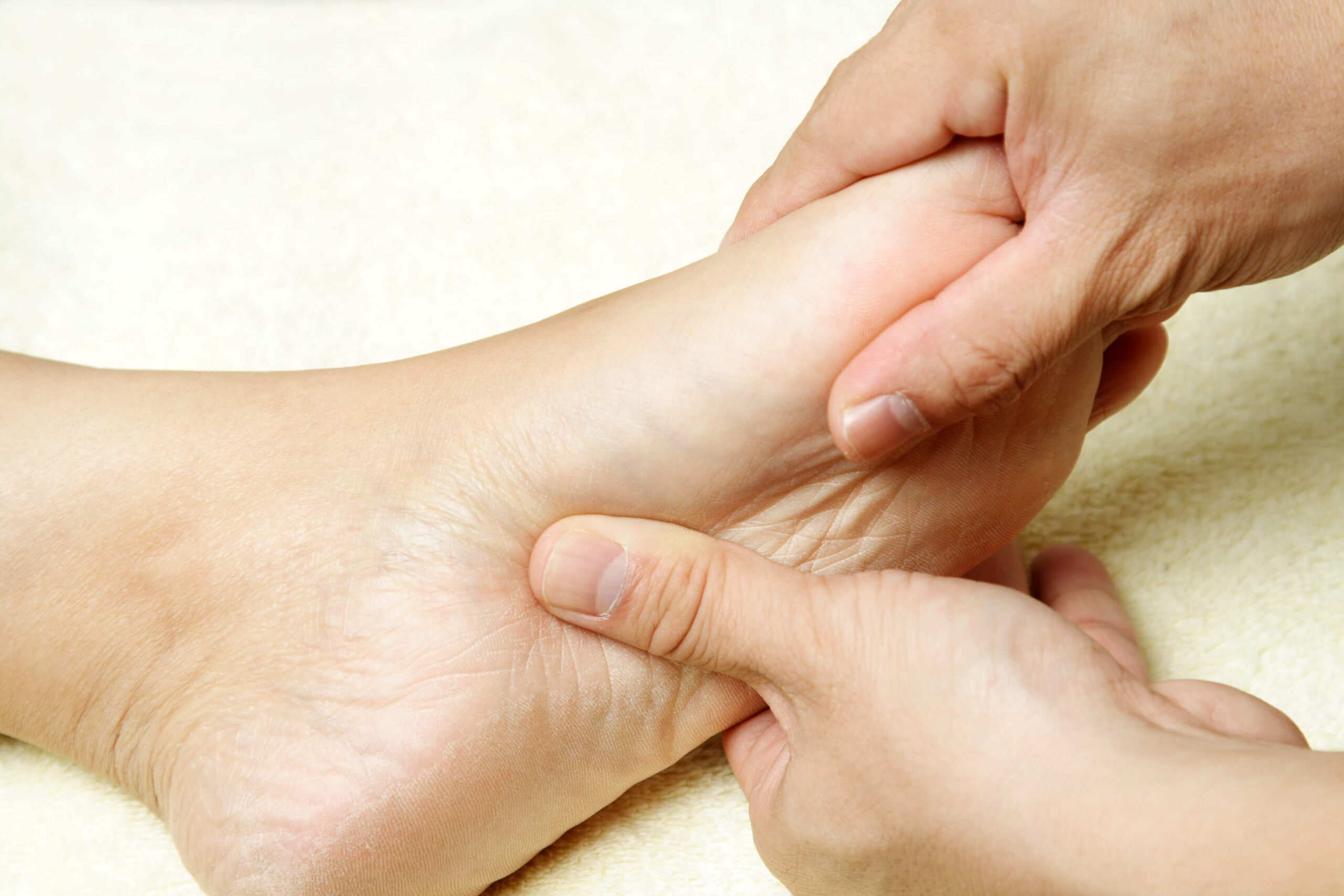Does Massage Help Plantar Fasciitis?
Plantar fasciitis is a common and painful condition characterized by inflammation of the plantar fascia, a band of tissue that supports the foot's arch. In searching for effective treatment options, many wonder if massage can help alleviate plantar fasciitis pain and aid in the healing process. In this article, we will explore the role of massage in managing plantar fasciitis, discuss various massage techniques, and highlight the potential benefits of incorporating massage therapy into your treatment plan.
Understanding Plantar Fasciitis
Plantar fasciitis typically presents as a sharp pain in the heel, especially during the first steps in the morning or after prolonged rest periods. The plantar fascia on the sole can become inflamed and irritated due to repetitive strain, improper footwear, or biomechanical issues. This condition can significantly impact daily activities and overall foot comfort.
The Role of Massage in Plantar Fasciitis
Massage therapy has been recognized as a potential adjunctive treatment for plantar fasciitis. The primary goal of massage is to reduce pain, improve blood circulation, relax muscles, and promote healing. Massage therapists aim to release tension, increase flexibility, and enhance overall foot function by targeting the affected area.
Types of Massage Techniques for Plantar Fasciitis
Deep Tissue Massage
Deep tissue massage is a technique that focuses on applying firm pressure to target the deeper layers of muscles and fascia. This type of massage can effectively relieve tension and break down adhesions that contribute to plantar fasciitis pain. The therapist uses slow, deliberate strokes and deep pressure to reach the underlying structures of the foot, including the plantar fascia, heel, and arch. Deep tissue massage can help release tightness, promote circulation, and reduce pain in the affected areas.
Trigger Point Therapy
Trigger points are specific areas of muscle tension that refer to pain in other body parts. Trigger point therapy involves applying pressure to these points to release muscle knots and alleviate pain. In the context of plantar fasciitis, the therapist will focus on trigger points in the foot, calf, and lower leg muscles that may be contributing to the condition. By identifying and addressing these trigger points, trigger point therapy can help reduce pain and improve overall foot function.
Myofascial Release
Myofascial release is a technique that targets the fascia, the connective tissue that surrounds and supports muscles and organs. With plantar fasciitis, the fascia in the foot, particularly the plantar fascia, can become tight and restricted. Myofascial release involves applying sustained pressure and gentle stretching to the affected areas to release tension and restore mobility. This technique aims to break up adhesions and increase flexibility in the fascia, ultimately reducing pain and promoting healing.
Cross-Fiber Friction Massage
Cross-fiber friction massage involves applying pressure and friction across the fibers of the plantar fascia to break down adhesions and promote healing. The therapist uses their fingers, thumbs, or knuckles to apply short, firm strokes perpendicular to the direction of the fascia. This technique can help reduce scar tissue, increase blood flow to the area, and improve tissue mobility. Cross-fiber friction massage is often used with other massage techniques to target specific areas of the foot affected by plantar fasciitis.

Potential Benefits of Massage for Plantar Fasciitis
Pain Relief
Massage therapy can provide effective pain relief for individuals with plantar fasciitis. By targeting the affected areas, such as the plantar fascia, heel, and arch of the foot, massage techniques help alleviate discomfort and reduce pain. The therapist applies pressure and specific strokes to release tension, relax the muscles, and promote the release of endorphins, natural pain-relieving chemicals in the body. Regular massage sessions can help manage pain associated with plantar fasciitis and improve overall foot comfort.
Improved Blood Circulation
Massage therapy stimulates blood flow to the treated areas, including the plantar fascia. This increased circulation enhances the delivery of oxygen and essential nutrients to the tissues while facilitating the removal of waste products and toxins. Improved blood flow to the plantar fascia can contribute to healing, reduce inflammation, and promote tissue repair. It also helps nourish the surrounding structures, including ligaments and tendons, supporting their overall health and function.
Muscle Relaxation and Flexibility
Massage techniques for plantar fasciitis help relax the muscles in the feet, calves, and lower legs, reducing tension and tightness. This muscle relaxation can improve flexibility and range of motion, allowing for better foot function. Massage therapy helps alleviate strain on the plantar fascia by releasing muscle tension, which may help reduce pain and discomfort. Improved flexibility and muscle balance can also help prevent future injuries and promote optimal foot mechanics.
Stress Reduction and Relaxation
Plantar fasciitis can cause significant discomfort and impact daily activities. Massage therapy provides a relaxing and stress-relieving experience, promoting overall well-being. The soothing touch and rhythmic movements of massage therapy induce relaxation, reducing stress and anxiety. Massage therapy can indirectly contribute to managing plantar fasciitis symptoms by calming the nervous system. Stress reduction is beneficial for overall healing and can help individuals cope better with the challenges of managing their condition.
Enhanced Healing and Recovery
Massage therapy promotes healing by stimulating the body's natural healing processes. The mechanical pressure applied during massage helps break up scar tissue and adhesions, improving tissue mobility and elasticity. This can accelerate the healing of damaged tissues and reduce the risk of developing chronic issues. Additionally, massage therapy helps increase the production of synovial fluid, a lubricating substance that nourishes the joints. By supporting the health of the joints and surrounding tissues, massage therapy can contribute to long-term recovery from plantar fasciitis.
Incorporating Massage into Your Treatment Plan
While massage can relieve plantar fasciitis, it is important to remember that it should be part of a comprehensive treatment plan. Consult a qualified massage therapist experienced in treating foot conditions, and work with a podiatrist or healthcare professional to develop an individualized treatment plan. This may include stretching exercises, orthotic devices, footwear modifications, and physical therapy to address the underlying causes of plantar fasciitis.

Considerations and Precautions
Before seeking massage therapy for plantar fasciitis, consider the following:
Consult with a Massage Therapist
Seek the expertise of a qualified massage therapist experienced in treating plantar fasciitis. A trained professional will have the knowledge and skills to treat your needs effectively.
Communication is Key
During your massage sessions, communicate openly with your massage therapist. Inform them about the location and intensity of your pain, any areas of sensitivity or discomfort, and your overall treatment goals. This will ensure the massage is tailored to your needs and preferences.
Safety Precautions
Remember that massage therapy may not be suitable for everyone, especially in certain medical conditions or if you have open wounds or infections on your feet. Discussing your medical history and any concerns with your healthcare provider or massage therapist before proceeding with treatment is important.
Conclusion
Massage therapy can be a beneficial addition to a comprehensive treatment plan for plantar fasciitis. It offers potential benefits such as pain relief, improved blood circulation, muscle relaxation, and increased flexibility. However, consulting with a qualified massage therapist and working with a podiatrist or healthcare professional is crucial to develop an individualized treatment approach.
Remember, massage therapy for plantar fasciitis is just one piece of the puzzle. It should be combined with other treatment options, such as stretching exercises, orthotic devices, and footwear modifications, to address the underlying causes of plantar fasciitis and promote long-term healing and relief.
If you're considering massage therapy for plantar fasciitis, consult a healthcare professional or podiatrist to ensure it is appropriate for your condition. With proper guidance and a comprehensive treatment plan, massage therapy can be valuable in managing plantar fasciitis and improving your overall foot health.

